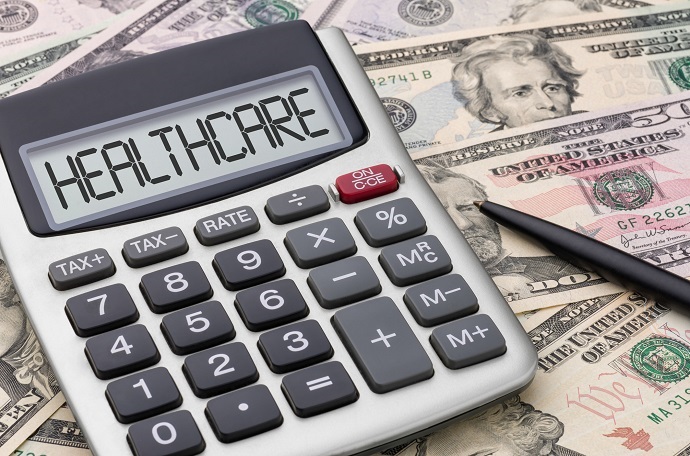Patient Collection Rates Drop as Out-of-Pocket Costs Go Up
Hospitals reported that patient collection rates dropped by 17.6 percent once patients owed more than $1,200 in out-of-pocket costs, a study showed.

Source: Thinkstock
- Hospitals collect significantly less from patients with higher out-of-pocket costs, a Crowe Horwath study confirmed. The study revealed that collection rates for patient accounts with balances greater than $5,000 were four times lower than collection rates for patient accounts with low-deductible health plans.
Using patient accounting data from 172 hospitals with more than 125 beds each, the healthcare consulting firm found that the patient collection rate declined at hospitals as out-of-pocket costs increased for patients.
“While average patient balances for high-deductible plans increase, payment collections vary based on the size of the balance,” stated the report. “As healthcare providers analyze the ‘realization’ (i.e., the percentage of net revenue versus gross revenue) of their managed care contracts, they also should understand risks associated with high-deductible plans and should recalibrate their AR valuation and potential impacts on revenue recognition to account for these new market factors.”
Researchers uncovered that true-self pay patients, those who are responsible for all healthcare costs, generally paid about 6.06 percent on the dollar, while patients who owed out-of-pocket costs under their insurance plan paid about 15.51 percent overall.
While self-pay after insurance customers unsurprisingly paid more to hospitals for healthcare services, the odds of receiving full patient financial responsibly still substantially went down as these patients owed more out-of-pocket costs.
Patients who owed less than $1,200 for inpatient services had a payment rate of 40.1 percent. But once patients incurred a balance between $1,201 and $1,450, the payment rate dropped by 17.6 percent.
The lower patient collection rate may spell financial trouble for hospitals because the $1,201 and $1,450 balance was near the inpatient Medicare deductible amount, researchers noted.
Patient payment rates continued to drop as patients generated higher out-of-pocket costs for inpatient services. The study found the following payment rate reductions:
• Patients with balances between $1,451 and $5,000 had a payment rate of 25.5 percent
• Patients who owed between $5,001 and $7,500 had a payment rate of 10.2 percent
• Patients incurring a balance between $7,501 and $10,000 had a payment rate of 4.1 percent
• Payment rate dropped to just 0.9 percent for inpatient accounts with a self-pay balance of more than $10,000
As a result, the average self-payment payment rate for patients who owed out-of-pockets costs under a high-deductible health plan was 10.9 percent across inpatient accounts.
Researchers found a similar trend across outpatient accounts. The outpatient payment rate for self-pay after insurance patients was just 23.7 percent on accounts with balances between $1 and $5,000.
The outpatient payment rate, however, declined to just 4.7 percent among patients who owed more than $5,000 but less than $7,500.
Therefore, the average self-payment payment rate for patients who had out-pocket-costs for outpatient services was 18.2 percent.
While hospitals can expect to collect less than 20 percent of patient financial responsibility from self-pay after insurance patients for outpatient services, researchers pointed out that patients have recently been paying more on high balances.
The payment rate for outpatient accounts with a balance between $10,001 and $50,000 increased from 14.6 percent in 2015 to 29 percent in 2016.
To help hospitals boost patient collection rates even under high-deductible health plans, the healthcare consulting firm offered three tips.
First, hospitals should create a payer class structure that highlights high-deductible health plans. Revenue cycle management staff should also separate true self-pay customers from those who self-pay after insurance.
By identifying payers with high-deductible health plans and patients who are at-risk for not paying, hospitals can better predict how treating patients will affect their bottom line.
Second, the firm advised hospitals to analyze self-pay realization rates. Revenue cycle management teams should look at the percentage of net revenue compared to gross revenue and analyze the resulting rate based on self-pay segmentation and dollar balance.
Third, hospitals should include financial counseling as part of their point-of-service patient collections strategy.
An Illinois-based hospital recently improved their point-of-service patient collection rate by 300 percent by implementing a patient financial responsibility education strategy. The hospital’s Vice President of Strategic Planning, Rebecca Wright, told RevCycleIntelligence.com last November that she instructed her front-end staff to help patients understand their financial responsibilities.
Her hospital’s educational campaign focused on revenue cycle management staff training. By educating her employees on the ins-and-outs of patient financial responsibility, she gave front-end staff the tools to discuss financial topics with patients and encourage them to pay.
Helping patients understand what they owe and why is key to developing an action plan for patient collections, the Crowe Horwath report added.
